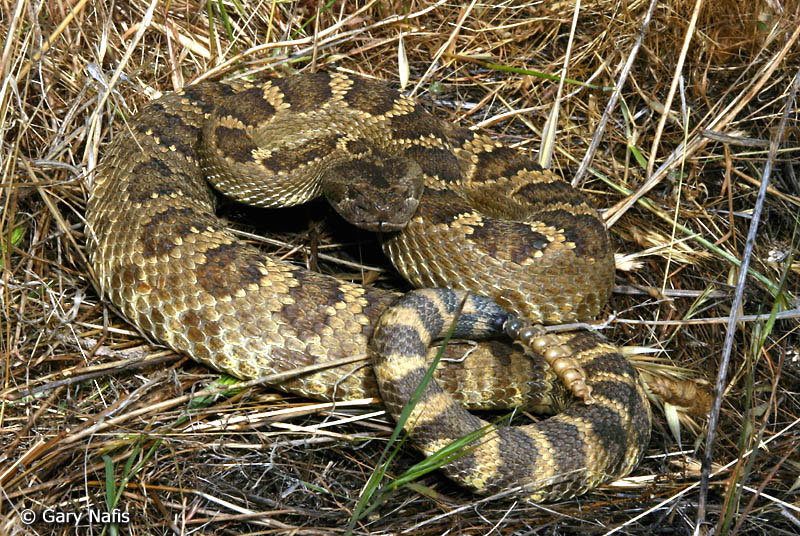Avoid Being Bitten By A Rattlesnake
 |
| Image © Gary Nafis |
Imagine belly-crawling up a draw as you sneak in to get into position to draw back on a big hog when you hear that bone-chilling *rattle* of a rattlesnake. What would you do?
Another scenario that is all too common is climbing up a hill and reach for a small shrub, or using the ground as a third point of contact. You reach down to support yourself and get tagged by a rattler. No sound. No warning. Just two-holes in your hand because a snake felt threatened. They blend in extremely well. Would you know what to look for?
Check out the information and the photos of these common rattlesnakes in Southern California on the California Herpetologist website. I was very impressed with how many snakes there truly are and what they look like. Some of them I had not seen before.
You would be surprised at how many people are actually bitten on the hand vs. the foot. I was chatting with a local paramedic last year and that was one of the key points he made clear to me. He said most of the cases he’s run into were when someone was reaching into a bush, grabbing a bush to pull themselves up, or crawling on the ground when they got tagged by a rattlesnake. That is something to take note of people.
I love snakes. I think snakes are one of THE coolest, most interesting reptiles on the plant. With that being said, I do NOT like the though of encountering one while I am putting a stalk on a Pacific-Hybrid deer, deep in the bush. Sure, I have my snake boots on, but not my snake-proof gloves or snake-proof jacket or snake-proof face mask. In order to plan for such an occurrence, I am constantly talking with other hunters, reading up on snake avoidance and just being cautious in the field. Most of my hunting buddies have seen a Mojave or a Western from a distance. I hope I never have the grand fortune, but should I encounter one (and the odds are that I will), here are some tips to avoid becoming a pincushion.
Here are some tips for avoiding rattlers altogether:
- Stick to marked trails.
- Snakes are cold-blooded and warm themselves in the sun, so don’t mistake one for a stick.
- Don’t hike alone.
- Go around a snake if you see one. A rattler will go out of its way to avoid human contact, but may strike if you get too close or if you step on it.
- Carry a walking stick. If you discover a rattler close to you, you may be able to move it away with the stick.
- Snakes have bad eyesight, but they can sense sounds and vibrations, so stomping your feet may scare it off.
Baby rattlers may be even more dangerous than adults, Norton said. An adult will try to save its venom to immobilize its prey, and may not inject any when defensively striking a human. A juvenile, though, doesn’t know yet how to moderate its venom “dose,” so it could give you the full wallop.
If you do get bitten, here are some survival tips:
- Get away to avoid further bites.
- Try to remember what color the snake was. It could help the ER staff.
- Later, remove jewelry and shoes in case of swelling.
- Don’t do the Hollywood thing and cut across the wound or try to suck out the venom. You might make it worse.
- Don’t take aspirin or ibuprofen, which can worsen bleeding.
- After you go home from the hospital, watch out for unusual bleeding or bruising, as well as any allergic reaction to the antivenom, if it was administered. If you have any of these symptoms, return to the ER right away.
Do any of you have any tips? How about a rattlesnake story you want to share? Please share some stories if you have them. I’d love to hear what happened.
Be First to Comment